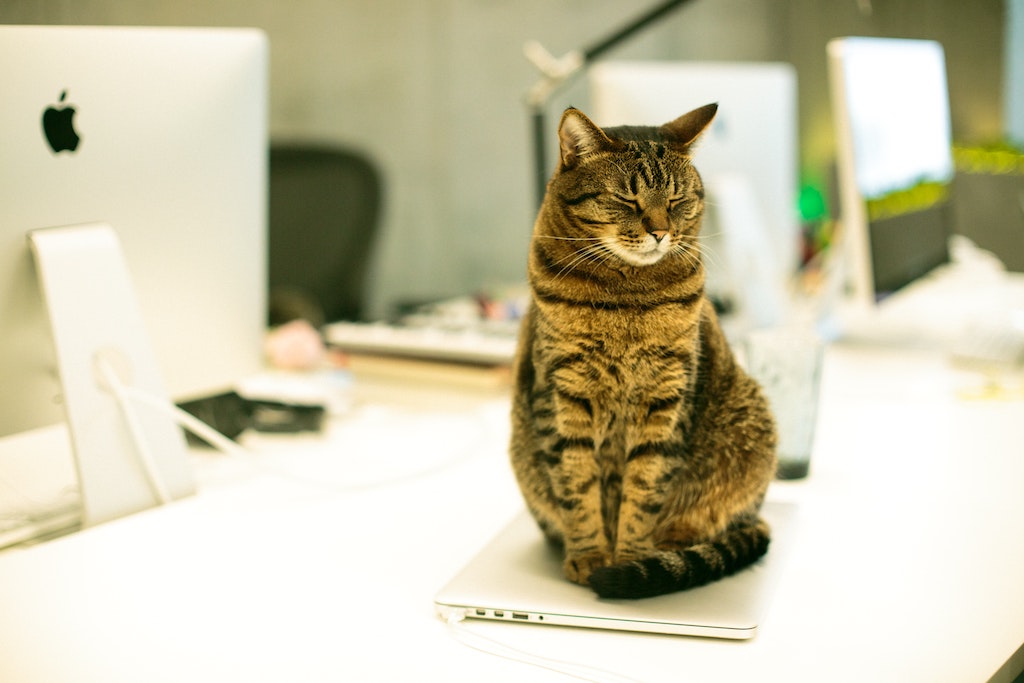As millennials become the largest generation owning and spoiling pets, insurers need to embrace new forms of technology to beat the competition

Cognizant chief digital officer Chris Blatchly believes technology is the key to insurers connecting with millennial pet owners (Credit: Unsplash/Andrii Ganzevych)
The Covid-19 Lockdown has led to many unexpected outcomes, but one of the more predictable has been an increase in the number of pets in homes. Chris Blatchly, chief digital officer and consulting leader for insurance at Cognizant, explains why the future of pet insurance will be heavily reliant on technology-driven insights.
As we have been forced to work from home as a result of the Covid-19 pandemic, many of us have opted to replace our lack of contact with human colleagues with some furry friends to rule the household.
As a result, the global pet insurance market is projected by some to surpass $10bn by 2025 and grow 6.7% annually.
Due to the majority of pet owners now being millennials, and their evolving consumer habits, pet insurance providers need to be able to keep up with the market to stay ahead of competitors.
To do so, there are some key trends they need to take into consideration.
Pampered pets
Older generations used to hold the title for owning the most pets, but millennials are now the largest group of pet parents, accounting for about 35% of total pet ownership and spending more money on them than any other generation.
Whether it is holidays or made-to-order meal deliveries, we are in the era of pampered pets.
This has also led to a rise in tech adoption designed around anything pet-related.
Having been brought up as digital natives, millennials are turning to pet-oriented technologies (pet tech), such as wearables, to monitor their pet’s health and security.
These kinds of technologies include, for example, pet doors with facial recognition, activity monitors, GPS trackers, RFID sensors and accelerometer sensors.
The data that they can generate can be vital in helping to support a data-driven approach to underwriting and claims processing.
To expand their market reach, this is an area all pet insurers should be considering moving forward in a post-Covid world, as they look to serve customers that expect quicker and more efficient service than ever before.

Four considerations when plotting pet insurance strategies
The changing pet insurance market and the new demands arising from the increase in millennial pet owners mean incumbent insurance providers need to carefully plot their pet strategies moving forward, in order to keep up with insurtechs that are already bringing new capabilities to the industry.
In doing so, there are four key themes they need to consider:
Choose a digital approach
With so many insurance options out there, whether it is opting for a policy from a provider or foregoing traditional insurers and saving to cover potential vet bills yourself, it can be costly and confusing for new owners.
To make it an easier and more inviting process, insurers need to create new and innovative ways to bring their services to market, wrapped in a personalised omni-channel experience.
Wearable pet tech can be a great addition here, allowing providers to offer risk-based pay-as-you-live policies, in which additional premiums or discounts are calculated based on the pet’s lifestyle, as measured through wearable devices.
A digitally-enabled approach like this can also lead to new business models that cater to the pet insurance market’s younger audience.
For example, peer-to-peer insurance uses the power of social networks to reimagine the very old concept of a mutual insurance company.
Social networks allow like-minded people to easily find each other and then pool their premiums to fund a pet insurance company.

Review your distribution method
The increase in millennial pet parents has been a catalyst for change in the way in which pet insurance customers buy their policies.
Firstly, the market is increasingly seeing a shift from purchasing insurance from agents and brokers towards buying directly from the insurer itself, with the success of pet-care comparison sites like Chewy or PetSmart an early indicator of this emergent trend.
We also know that millennial consumers do not respond well to traditional advertising messages.
With this in mind, pet insurers need to start considering new distribution methods that target this new audience in the personalised way they expect, largely via their preferred digital channels.
Doing so will help insurers to build trust and connect with millennial customers through a tailored digital marketing strategy.
Unlock the power of Artificial Intelligence
As is common within the insurance industry, too many pet insurers still rely upon legacy IT systems, which were built to support the traditional, manual processes that are no longer appropriate for today’s digital world.
These systems significantly hinder businesses’ chances of success, especially when competing against digitally native entrants to the market.
Pet insurers need to realise the value of modernising their IT systems, and prioritise flexibility and scalability when doing so, along with other key business capabilities, like automated quote generation.
To advance their digital evolution, pet insurers need to look to artificial intelligence, which will enable them to automate core capabilities in new ways.
For example, intelligent process automation will enable the direct issuance of low-value, low-risk policies and the straight-through processing of low-value claims.
AI will also enable machine learning-based decision support for underwriters and claim adjustors, and when coupled with intelligent automation, will allow carriers to continuously mine case and claim data to identify fraud and security risks in real-time.
Make health and security a top priority
Finally, another strong differentiator for pet insurers is loss prevention services, as pet owners’ top concern is their pet’s health and security.
By offering device or sensor-driven alerts, insurance providers can ease these concerns by reducing injury claims, which can translate into premium discounts.
By enabling their systems to integrate with third-party wearable-device data, pet insurers will gain significant insights.
They can continuously monitor these data streams and pass contextual recommendations to the pet owner to help improve their pet’s health.
Doing so means a proactive approach to reducing probable claim losses, versus the traditional reactive approach.
The future of pet insurance is technology enabled
The pet insurance market is faced with an abundance of change and development, but incumbents should not let this put them off trying to compete with other players in their market.
The journey will not always be easy, but taking the above considerations into account and making the most of pet tech could see them take the top spot as tomorrow’s market leaders.
